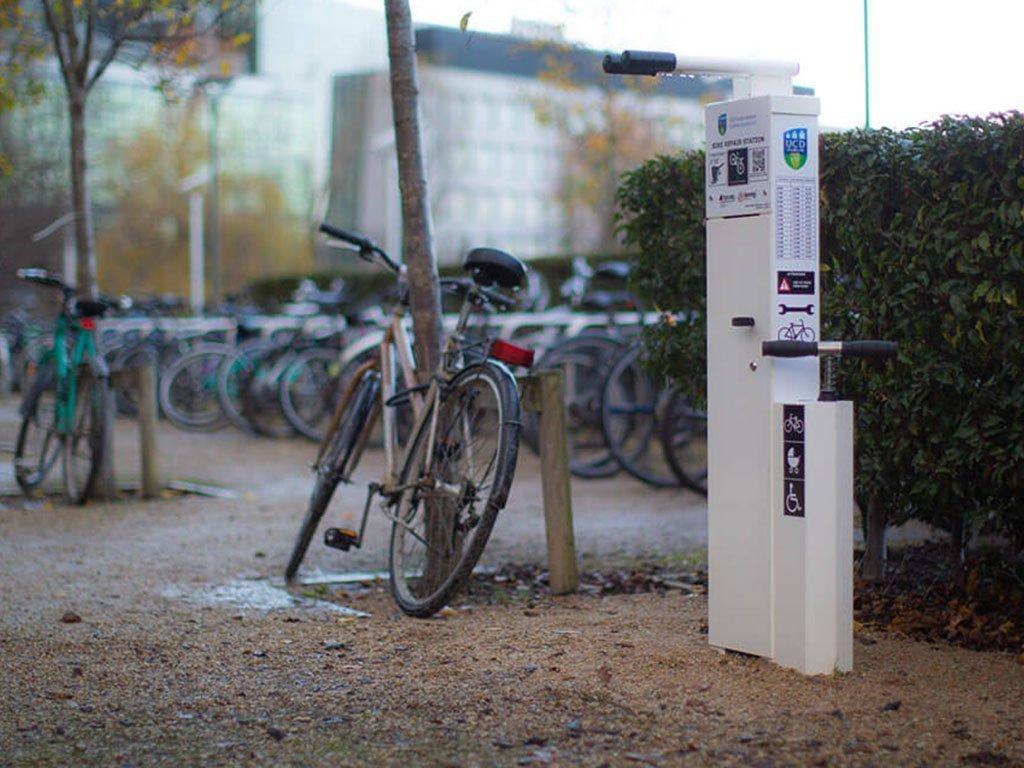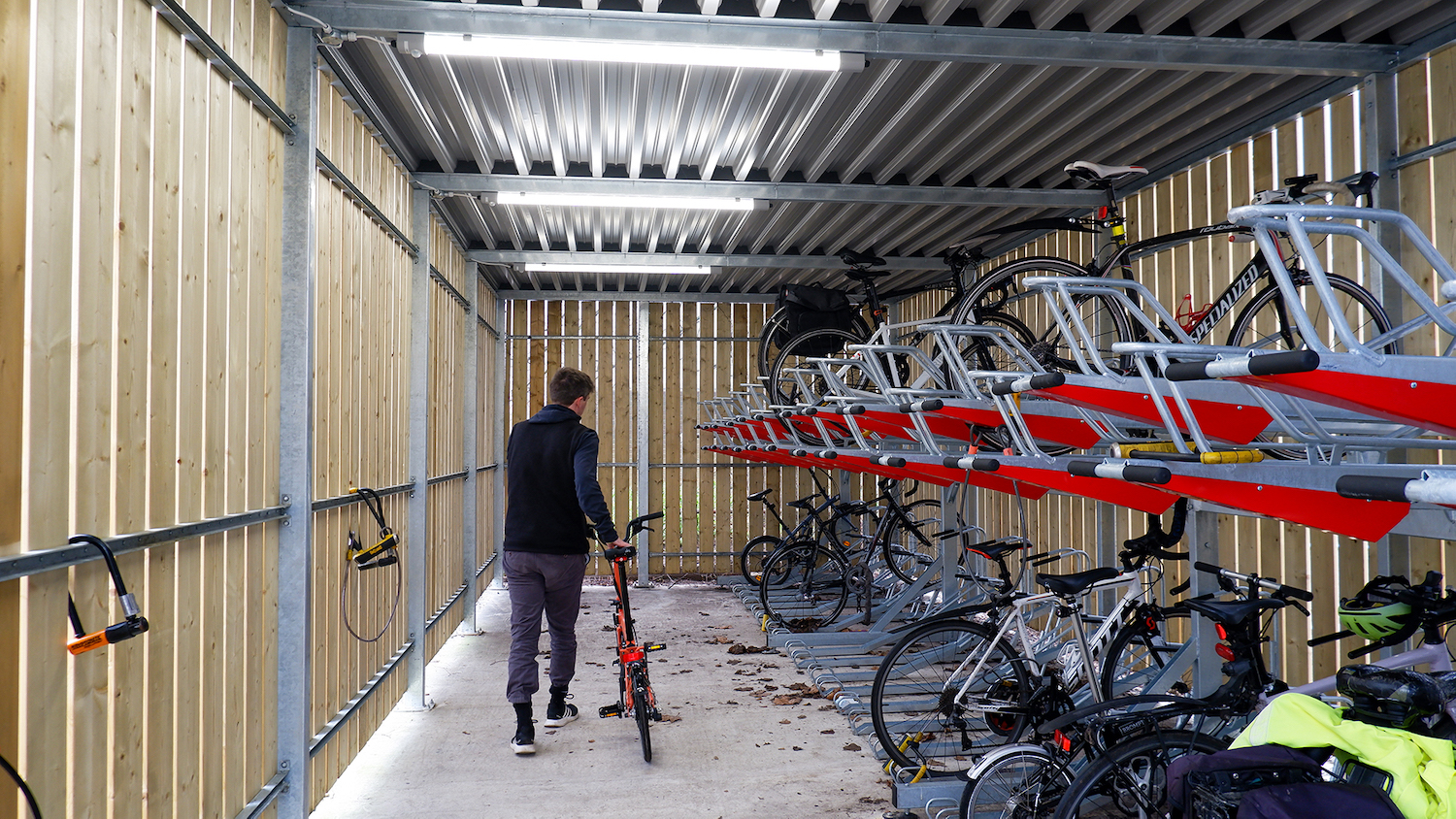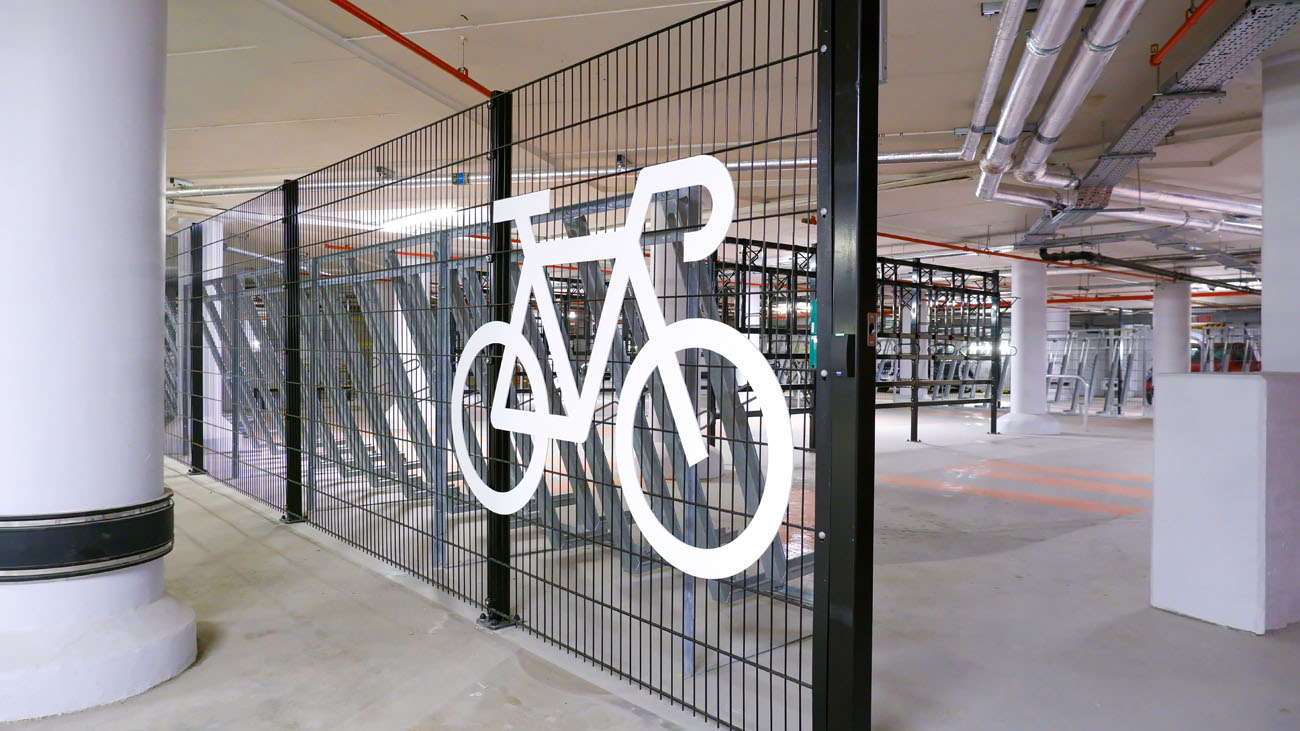When getting any new type of bicycle storage for your business or project, it pays to know about the different types of parking there is available. That’s why we created our ultimate guide to cycle parking, to help you learn more about the various options, and what to look out for when getting any quotes.
Table of contents
- Types of Bike Storage
- Aisle & Width Requirements
- Height Requirements of Bike Storage
- What are the Sizes of Different Bicycles?
- Bike Parking ‘Red Flags’
- Bike Rack Design Features
Types of Bike Storage
1. Horizontal bike parking
- Horizontal bike storage is when a bicycle is parked in a conventional upright position. Sheffield stands or high-density single-tier racks park bicycles in this position.
2. Vertical bike parking
- This method of storage positions a bicycle vertically, with the handlebars and front wheel facing upwards. With a stagger between each bicycle. Vertical or wall bike racks reduce the depth to that of a standard bicycles height and allows for parking in narrow spaces. Semi-vertical parking is also classed under this method of storage.
3. Two-tier bike parking
- Parking one bicycle above another is often the most space-efficient method of storage. Two-tier bike racks allow for the safe loading of one bicycle on to an upper-tier above another, for safe use a two-tier bike rack should include gas-lifting.
- This form of parking must allow for the required dimensions of a standard bicycle within the frame of the bike rack, or it will not be functional.
4. Staggering and high-low spacing
To allow for a higher-density of bike storage than the dimensions of a standard bicycle permits, a high-low stagger can be used to prevent handlebars clashing and reduce the centre to centre spacing between bicycles.
High-low spacing can be achieved by raising every other bicycle on a racking system, or the positioning of vertical racks on a wall.
Aisle & Width Requirements
To ensure bike storage positions are accessible, correct and adequate aisles and loading distances must be provided. Loading distances take into account the length of a bicycle and turning of the handlebars to move a bike into position.
The loading distance begins at the end of the bike rack or parking bicycle if this extends further than the rack.
Horizontal and vertical bike storage
- 1500mm aisle distance should be provided to ensure full access.
Two-tier bike storage
- 2000mm of aisle distance should be provided for two-tier storage to allow for the lowering of the upper tier and loading of a bicycle.
Height Requirements of Bike Storage
Horizontal bike storage
- Turvec generally advise that horizontal parking should allow for clear standing height to be used safely.
Vertical bike storage
- The length of a bike determines the height requirement for vertical storage with room for manoeuvring, we advise no less than 2000mm. If bicycles are to be staggered to improve the capacity of a row of bikes, 2200mm of height is required to accommodate the high-low spacing.
Two-tier bike storage
- Two-tier bike storage has fixed height requirements to ensure all spaces are accessible. Two-tier bike racks have a high-low stagger between bicycle spaces on both tiers to maximise capacity, taking into account this stagger and the height of one parked bicycle above another, the minimum height to accommodate a two-tier bike rack is 2600mm.
- Any less than 2600mm is not suitable for two-tier bike storage with a stagger.
What are the Sizes of Different Bicycles?
- As a general rule the international recognised size is 1900mm long, 1200mm tall and 750mm wide. Making allowance for these dimensions should ensure that all standard bicycles can park adequately.
Non-standard bicycles.
- Cargo Bikes – 2500mm long, 1200mm tall and 750mm wide
- Recumbent Bikes – 2000mm long, 1200mm tall and 750mm wideThe growth in recumbent and cargo bikes should be accommodated within the design of bike storage facilities.
- Cyclist wheeling bike – Space required is 1000mm.
Bike Parking ‘Red Flags’
A bike shelter is designed to provide weather protection for bicycle racks. A compound or enclosure provides security through gated access to a shelter or area. When getting quotes for a new shelter or enclosure, always check to make sure your company are not showing any of the below ‘red flags’:
Non-gas two-tier bike rack
- Gas-assisted bike racks include a gas-spring to ensure the top level of a two-tier rack is accessible for everyone and all bike types.
- Gas-assisted lifting is an essential safety and accessibility feature for two-tier bike racks. This allows for all users with all bike weights to access the upper level of a bike rack.
Wheel benders
- Some basic bike rack designs feature wheel benders, these are simple front-wheel grips that hold a bicycle upright. The issue with wheel benders is they can easily damage bike wheels or spokes if knocked when other cyclists are loading the rack.
Sub 2600mm ceiling height two-tier bike racks
- A two-tier bike rack with 375mm or 400mm spacing cannot park a bike in a ceiling height of less than 2600mm as referenced earlier in this guide.
Locking point
- This is the area on which a bike is secured to the bike rack. It should be easy for a d-lock to access.
Too Small Circulation zone
- The circulation zone is the distance between the end of the bike rack and the nearest obstacle. It is the distance a cyclist has to manoeuvre their bicycle and access a bike rack.
Bike rack design features
Security & Locking Points
- To securely lock a bicycle, we recommend locking the bicycle wheel and frame, bicycle racks should allow for both the wheel and frame to be locked.
- Locking points should be positioned so that a d-lock can access the frame and wheel of a bicycle. Some locking point designs are not positioned in an accessible location for bike locks.
Bicycle support
- To be parked a bicycle must be supported in a horizontal upright or vertical position.
Leaning
- Bicycles can be parked by leaning onto a rail or stand. This is the least space-efficient method of parking a bike as it takes more space whilst leaning. This can be seen with Sheffield stands and is why these demand the largest centre to centre spacing for horizontal parking.
Hooks
- Hanging bikes on a hook is a suitable method of vertically parking a bicycle, however the hook should be installed in combination with a locking loop to ensure the bicycle can be secured.
Front fork support
- Some single-tier and double-tier parking racks incorporate fork support systems. This is a design that holds a parked bicycle upright by supporting the forks on the front of a bicycle. This is a method of safely supporting a bicycle with no risk of damage.
Cradle
- A cradle design bike rack supports a bicycle by the wheel, ensuring no part of the frame is scratched. This form of parking is not compatible with mudguards.





